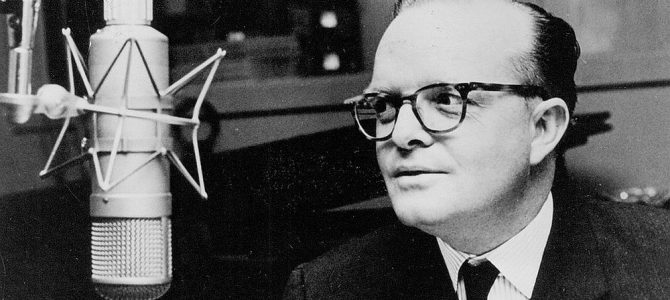
Today is Truman Capote’s 92nd birthday, and this year marks the 50th anniversary of the publication of his great American crime novel, In Cold Blood. The small-statured and sensational Capote, with his trademark high-pitched voice, was unlike any other authors, playwrights, or actors of his time. His “child” as he called it, In Cold Blood, has proved to be a timeless tragedy and the type of story that audiences are still obsessed with today.
In Cold Blood is arguably the pioneering story that paved the way for a genre that’s popularity has surged in the twenty-first century: true crime. With the mass following of cold-case podcasts like “Serial” from “This American Life” and documentary series like “Making a Murderer” or “The Case of: Jon Benet Ramsey,” audiences are still mesmerized by the type of non-fiction, investigative story that Capote first wrote about 50 years ago.
On November 16, 1959, Capote spotted a small story in the New York Times, no more than an inch or two long, headlined “Wealthy Farmer, 3 of Family Slain.” That news story was the only inspiration he needed to pack up and head to Holcomb, Kansas—the small farming town that became the setting of one of America’s most famous crimes.
The High Wheat Plains of Western Kansas
The story of the Clutter Family, as Capote tells it, begins with the quirky personalities and interests of a mostly normal, all-American family, and ends in a quadruple homicide committed by two ex-convicts: Dick Hickock and Perry Smith. In Cold Blood traces every clue and plausible murder theory, then details the story of Hickock’s and Smith’s arrest, trial, years on death row, and eventual execution.
Capote’s research would result in a four-part series in The New Yorker and a completed novel published in 1966. He interviewed neighbors, residents, and detectives, took 8,000 pages of notes, and eventually became so invested in the crime and the criminals that he became part of the story. Thus, the birth of New Journalism.
In an interview after the book was published, Capote told the New York Times, “It seemed to me that journalism, reportage, could be forced to yield a serious new art form: the ‘nonfiction novel,’ as I thought of it.” Capote did not use any recording devices. It is said that he instead memorized the case and its dialogues. He captured the true nature of not just the people of Holcomb, but the murderers, too. He visited, interviewed, and kept in touch with Hickock and Smith as inmates — so much so that he developed relationships with them and wrote about their life stories.
This is how is how his writing came out as a novel, not a piece of reporting. This new form of journalism that required not an altering of the facts, but the addition of the author’s imagination, was one that some also attribute to writers like Tom Wolfe, Joan Didion, and Gay Talese. (Of course, in the typical high-drama Capote fashion, he would later disagree that his novel could not be categorized in any genre. His opinion here was that nothing like In Cold Blood existed in the history of journalism.)
Why Are We so Obsessed with Crime?
I don’t think I can (or should) make the case that popular crime shows and the cable networks devoted to true-crime programming can be categorized as New Journalism. Didion would surely be rolling in her grave at that thought. But there is something to be said for rejecting local news packages or black and white newspaper reports, and a desire for a more artistic telling.
Maybe it’s doesn’t stop at wanting something more aesthetically appealing. Maybe there is also a desire for a different type of story. Audiences have lost a certain amount of trust in the reporters, anchors, and police press conferences. They want someone else to dig into the story and add some of his own imagination of what could have happened.
They don’t care if they know it’s all a show for ratings. They are intrigued by the killers’ back story and other conspiracy plot lines, no matter what the police reports originally said. We want to hear from someone like Capote, a short, squealing man from Manhattan who had no business being in Kansas, and what he has to say about the look in the murderer’s eyes.
In Cold Blood set the precedent for taking the typical news story, a few quick lines about the facts we know, and turning over every rock to unveil stories about humans and the calamity that surround us.
In an eerily pertinent 1966 New York Times book review of In Cold Blood, literary critic Conrad Knickerbocker discussed the importance of this written work in an electronic age: “Tape and film, documentaries, instant news, have sensitized us to the glare of surfaces and close-ups. He gratifies our electronically induced appetite for massive quantities of detail, but at the same time, like an ironic magician, he shows that appearances are nothing.”
Perhaps, in a world where “sensitized” is an understatement for our relationship with screens, Capote can induce your appetite for both cold-blooded killer tales and the written word. Happy birthday, Mr. Capote.









